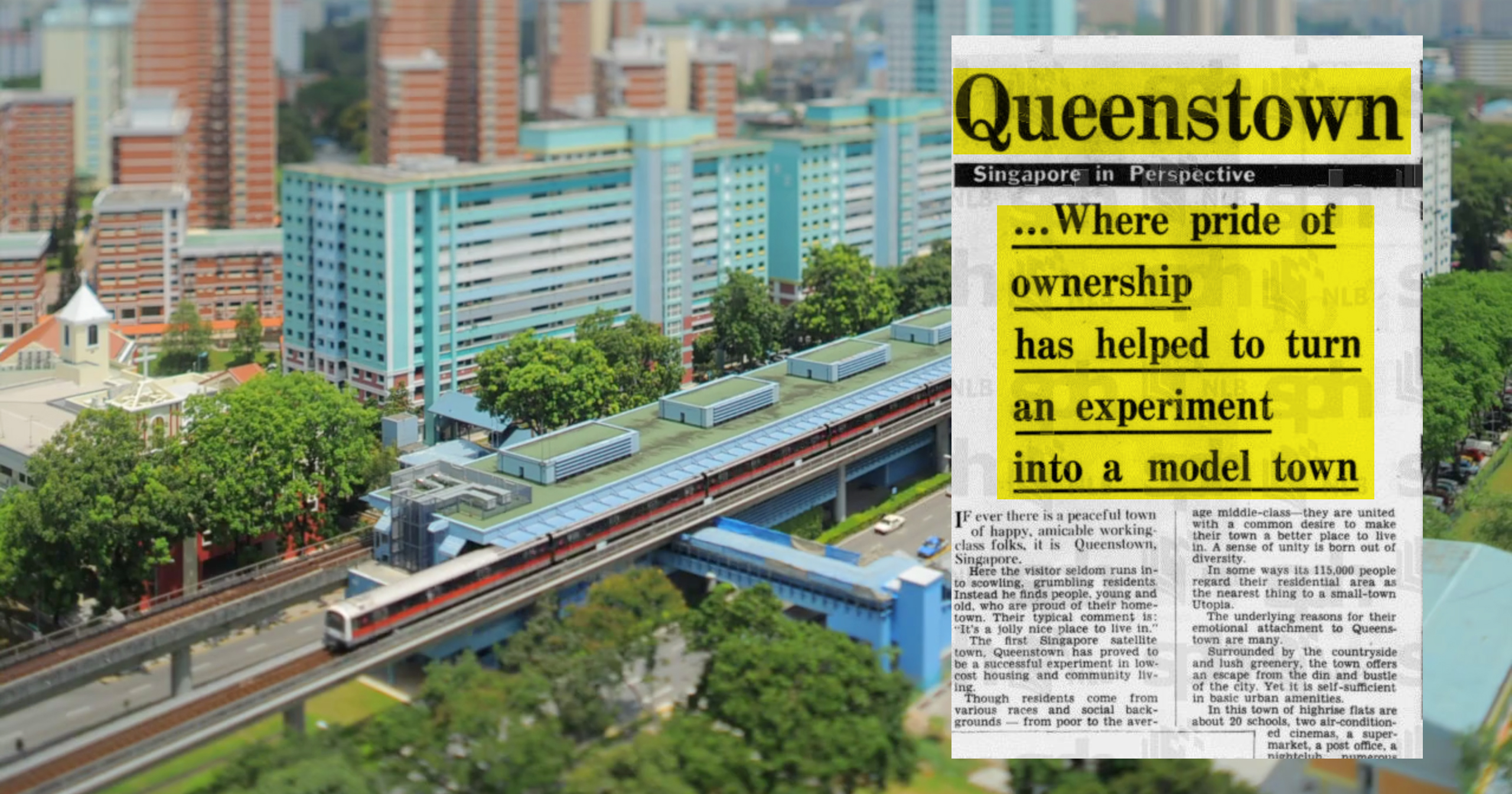Pre-town swampland
Before Queenstown became a town, the area was swampy valley wedged by two hills -- Hong Lim and Hong Yin.
The former was a cemetery, while the latter had rubber and orchard plantations.
Village at foot of hill
Located at the foot of Hong Lim hill was a village called Boh Beh Kang (No-Tail River), possibly a reference to the mysterious source of the Singapore River.
Boh Beh Kang had about 300 Chinese (mainly Hokkien, Teochew, and Hakka) families living in two- or three-storey attap huts.
To build the new town, the village was cleared out. The hills were levelled and the earth used to fill the swamps.
According to The Straits Times in October 1953, state-of-the-art machinery cleared 10 tonnes of earth per minute.
An experiment in "low-cost housing and community living"
First conceived as Singapore's first satellite town by the Singapore Improvement Trust (SIT) in the early 1950s, Queenstown was named after Queen Elizabeth II to commemorate her coronation in 1953.
Fun fact: There are some streets around the Queenstown/ Alexandra area that are named after British royalty. These include Prince Charles Crescent, Prince Philip Avenue, Princess Ann Close, and Margaret Drive.
In fact, Queenstown is sure to feature on the itinerary whenever British royalty visit Singapore:
[related_story]
First satellite town
As Singapore's first satellite town, Queenstown was, in the words of The Straits Times in September 1970, an experiment in "low-cost housing and community living", which cost an estimated S$80 million to develop.
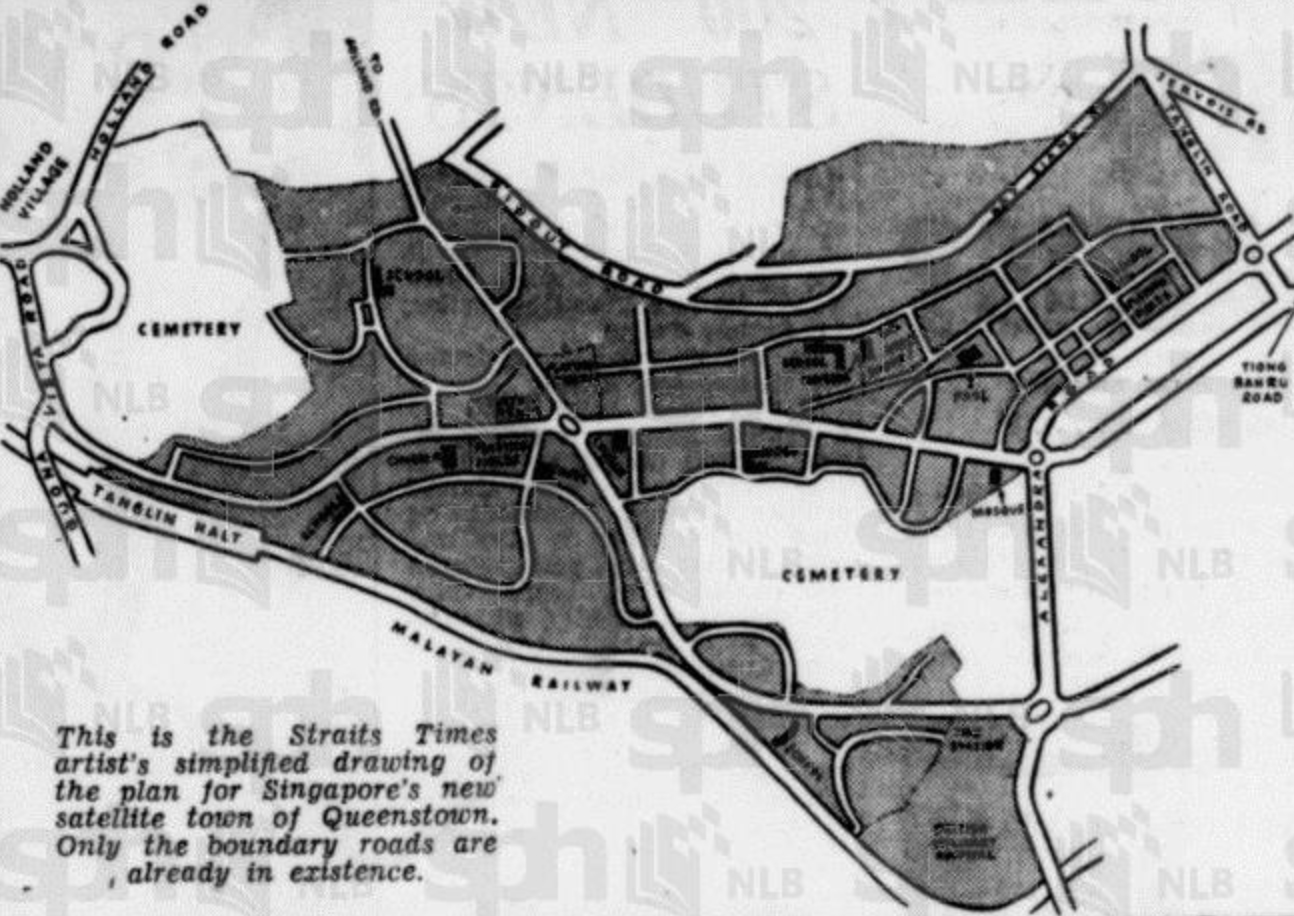 Artist impression of Queenstown in October 1953. Via NewspaperSG.
Artist impression of Queenstown in October 1953. Via NewspaperSG.
This was done by making Queenstown self-sufficient in basic amenities:
"In this town of highrise flats are about 20 schools, two air-conditioned cinemas, a supermarket, a post office, a nightclub, numerous shops, factories, and a sprinkling of banks, restaurants, and clinics.
There's even a library to cater to bookish residents."
- The Straits Times, 8 September 1970
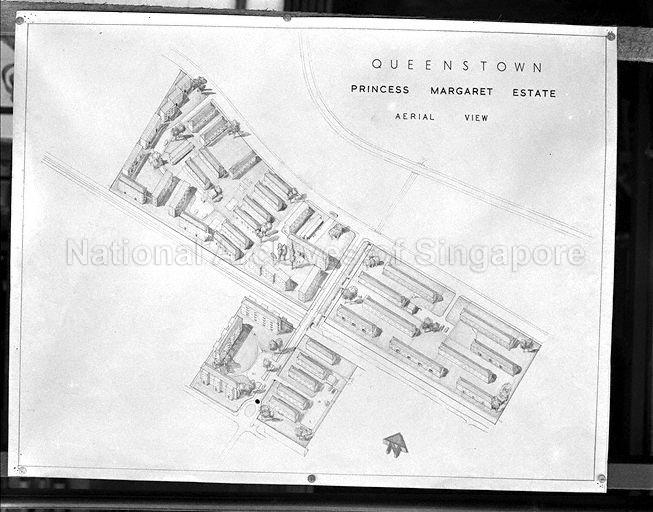 Plan showing blocks of SIT flats in the Princess Margaret Estate in 1954. Via NAS.
Plan showing blocks of SIT flats in the Princess Margaret Estate in 1954. Via NAS.
Affordable housing
More importantly, the housing had to be affordable for the low-income folks.
In 1964, flats in Queenstown were put on sale to be bought by low income-earners.
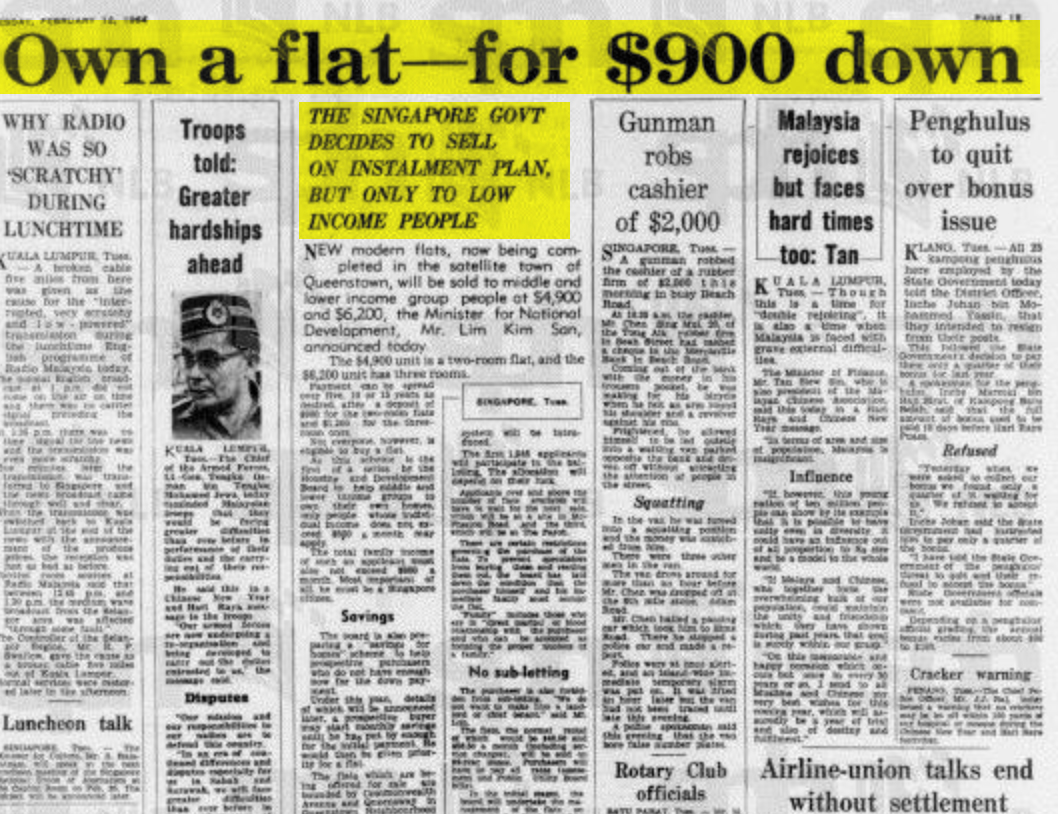
Low-income earners had to be:
- Singapore citizens
- Earning individual income of not more than $500 per month, or
- Earning family income of not more than $800 per month.
They would qualify to buy a two-room unit at S$4,900 or a three-room unit at S$6,200.
Additionally, they could pay for the flats via an installment plan over five, 10, or 15 years. Down payment for a two-room unit was S$900 and S$1,200 for a three-room unit.
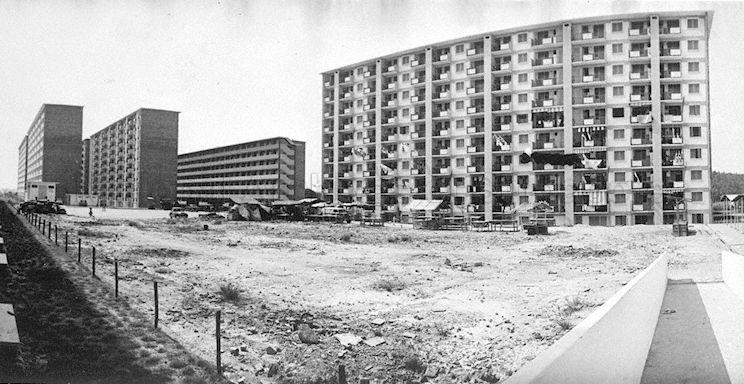 10-storey HDB flats in Queenstown in the 1960s. Via NAS.
10-storey HDB flats in Queenstown in the 1960s. Via NAS.
In comparison, private houses were selling at prices between S$20,000 and S$45,000, according to then-Minister for National Development, Lim Kim San.
Lim also mentioned that making housing affordable gave low-income residents the "pride of possession" where previously they had to endure rented accommodation.
News of affordable housing was so well-received that one day after the Queenstown units were announced, nearly 3,000 applicants "jammed" the Housing and Development Board (HDB) offices to apply for 1,948 available units.
"It's a jolly nice place to live in"
Apparently, the experiment was a success, as trumpeted in The Straits Times in September 1970.

Factors leading to its success as a model town included Queenstown's well-connected location and a dedicated group of pioneer residents.
Queenstown also essentially functioned as a town without the problems that plagued the inner city such as stench, noise pollution, and slums.
From there, Queenstown became a model template for other satellite towns in Singapore such as Toa Payoh and Tampines.
Top images via Keith Loutit's Lion City and NewspaperSG
If you like what you read, follow us on Facebook, Instagram, Twitter and Telegram to get the latest updates.
